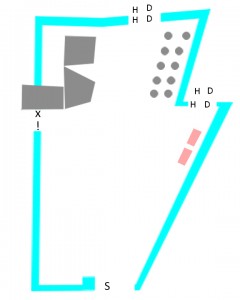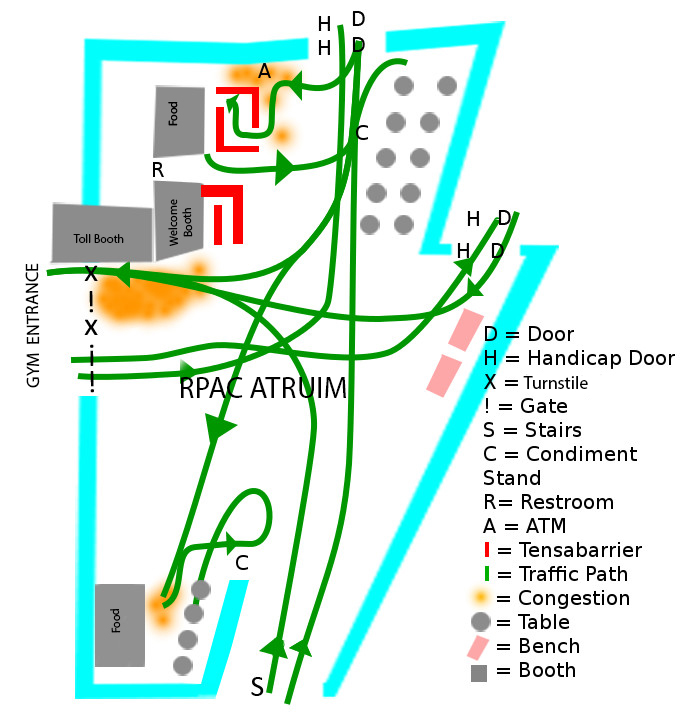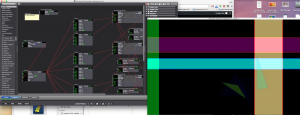Isadora Workshop Example
Posted: September 18, 2015 Filed under: Isadora Leave a comment »https://www.dropbox.com/s/hagnavycqlx5skx/LDI%20Institute%202014%20.izz?dl=0
“People will care.”
Posted: September 17, 2015 Filed under: Uncategorized 1 Comment »The Flag and the Robots.
What do you think?
Everything is a Remix
Posted: September 16, 2015 Filed under: Extras Leave a comment »A brilliant update to a classic video that deals with the issues of creativity.
http://digg.com/video/everything-is-a-remix-remastered
Also: Check this breaking news in the world of Fair Use:
http://motherboard.vice.com/read/fair-use-vs-algorithms-what-the-dancing-baby-did-to-copyright
Pressure Project 2 is now posted.
Posted: September 16, 2015 Filed under: Announcements 1 Comment »Please check the assignments page for the text description of PP2.
http://recluse.accad.ohio-state.edu/ems/?page_id=222
“Cheryl is a D*ck”
Posted: September 16, 2015 Filed under: Extras Leave a comment »

I found this interesting take on how to represent a similar situation as the one we approached in PP1.
I wonder how one might develop a system (intervention) to fix the problem identified here:
Here is the full post with the description of the problem:
PS (This post has a case of the potty mouth.)
Dialog with Machines by Peter Krieg
Posted: September 16, 2015 Filed under: Jonathan Welch Leave a comment »Machine’s and Ideas
Modern computers can’t integrate arguments from different sources into new conclusions. They are unable to create comparatives, metaphors, or analogies, because they are essentially Turing machines (a hypothetical device that manipulates symbols on a strip of tape according to a set of rules, i.e. linear logic). The storage requirement for associative memory in a hierarchical structure increases exponentially as details add up. Data contained in capsulated in hierarchical structures, like the internet, has no comparative capabilities.
Biological Systems are Knowledge Based Polylogical Learning Systems
Hierarchical deductive inference system, like a computer, has only one way to look at things, but learning systems integrate patterns from external and internal events, and compare experiences to create new knowledge. It then uses the knowledge generated to transcend logical domain and apply the map to a new system. Biological systems create an abstract conceptual map of a solution and apply it no a new context. For example, a toddler taking the experiences objects falling combined with experience with the application of force to an object to come to the conclusion that when he or she pushes their plate off the table; it will fall onto the floor creating a mess.
Humans simulate “autopoipsis” (self organization a learning system develops through survival) in conversation. We abstract structural similarities between language and the adaptive behavior of survival. Data storage in cognitive systems can be thought of as generative, in the way we create conceptual symbols, rather than transcribe every event. For example, I might be read a long article, but I will probably only remember general idea as a sequence symbolic representations of the data I find relevant… (i.g. If I wasn’t taking notes, I would probably only remember this as a long article about how people are complex, and machines are dumb.)
Deep Blue Cheated, Virtual Reality Adapts, after that Everything gets Fuzzy
When you ask a person to factor 21, we don’t have to try every number until we get it right. A computer’s approach to problem solving is to test every possible solution, and though they can do this with increasing speed, it is an inefficient approach. While current computer technology does not think like we do, there are some similarities to our symbolic memory and the way some virtual reality systems are generating dynamic maps and dialogue. New “Pile Systems,” store data as input/output patterns.
On the last two pages Kreig describes Fuzzy Logic (which I cannot differentiate from a Pile System) and predicts the rise of the machines…
What’s Bugging Me About All That
He says “high end computers can handle 14 dimensions” (p.24), which seems to conflict with his premise of the mono-logical nature of computers?
At the top of page 24 Kreig says “knowledge system must be able to analyze data and create new data from it,” but isn’t that what a computer does, compare data with a function that generates an output? It does not create a new idea, just applies an existing formula to a pre-categorized set of variables, but doesn’t it generate new data?
How does quantum computing factor in? As I understand it, the “Q-Bits” these machines are based on use quantum “paradoxes” to be 1 and a 0 at once, rather than testing every solution as in a linear logic system. Isn’t this is essentially a Polylogical system?
He lost me on “Pile Systems” and “Fuzzy Logic.”
Doug Mann’s introduction to Jean Baudrillard
Posted: September 16, 2015 Filed under: Jonathan Welch Leave a comment »Doug Mann’s introduction to Jean Baudrillard relays a man with a philosophy on contemporary American society’s construction of a cultural reality with subjective tangibles and a history made malleable with philosophical semantics and media representation.
Baudrillard expanded on a Marxist categorization of objects as use vs. exchange, citing objects that have practical and prestigious value, and envisions a utopian future were gifts cease to be consumer objects and are exchanged for love (I wonder what he would have thought of Facebook, a consumer culture of virtual gifts).
The philosophy of simulacra, phases of imagery, and science fiction, was strangely analogous to neoromantic historian view of history and myth. Mircea Eliade’s (a historian concerned with myth and culture) philosophy of modern vs. “primitive” man’s connection to time and events is an odd parallel and inversion of Baudrillard’s writings on cultural shifts in the perception of reality. Both make extraordinary statements, and use a philosophical semantics to argue the validity through perceptually dependent “truths.” Eliade makes statements about archaic man’s freedom from the progression of time in a way that implies magical abilities to travel through time, and Baudrillard predicted that America would never enter the Gulf War, but they explain their claims, they describe a culturally constructed paradigm in which “actual” historical events are irrelevant. Conversely, Eliade believed modern man’s attachment to a “non-reversible” chronological history shackles us to an unchangeable reality that archaic man transcended through myth, contrasted with cultural progression to Baudrillard’s third order of simulacra, where we have created a disconnected virtual reality.
His views on seduction blatantly enforce an ignorant archaic stereotypical gender roles, and are not worthy of mention.
Pressure Project 1
Posted: September 16, 2015 Filed under: Jonathan Welch, Uncategorized Leave a comment »The location and time that I chose to schedule my Pressure Project, were less than optimal (the RPAC on Monday 09/07, the day on the labor day footmab game). There was little traffic and no congestion.
RPAC Atrium
Most of the congestion was in front of the one active turnstile, but they relieved it by opening the other.
The congestion near the tensabarriers in front of the food booth at the top was mainly from people looking at the menu, the food booth at the bottom had no barriers and less congestion.
The vast majority of the traffic came through the doors that did not have handicap access, and no one used the button to activate the doors.
A sadistic, and therefore interesting, social experiment would be to use the turnstiles for outgoing gym traffic instead of incoming, and change the incoming gym traffic to the left side and outgoing to the right.
I suspect this would create a great deal of frustration for both the patrons and the student employees, with outgoing traffic blocking the entrance/exit to argue with the attendant, people trying to come in the turnstiles on the right (as is typical for road traffic), and people trying to exit through the gates.
Posted: September 14, 2015 Filed under: Alex Oliszewski, Assignments, Pressure Project 2 Leave a comment »
Oliszewski Generative Assignment.izz
Hey all, check out the Isadora file I have attached above. Try double clicking on some of the usermade actors in this program. (Triangle mover) (Line Mover).
There are also a couple of special actors embedded in this project. Namely the “Drift Random” actor. (You can find it inside the Drift Random/Smoothed actor.)
Feel free to use anything from this patch in working on your own.
-Alex
Posted: September 14, 2015 Filed under: Anna Brown Massey, Reading Responses Leave a comment »
Some notes
RSVP Cycles – Lawrence Halprin
Scores
- as symbolizations of process e.g. musical, grocery list, calendar, this book
- as method of making process visible
- can communicate processes over space-time
- Hope for socres as way of designing large-scale environments
- Must allow for feedback
- as potential communication device
Environment + dance-theater
- non-static
- process-oriented (not result-oriented)
- values present, but not demonstrable
Resources
Scores
Valueaction
Performance
Order can be any. e.g PRSV
Cycle works at two levels: self, group
– meant to be free–making processes visible
Danger: becoming goal-oriented… scores are non-utopian; they’re idealistic, hope-oriented
Score: system of symbols to convey/guide/control interactions between elements: space, time, rhythm, and their sequences, people and activities, and the combinations that result
An Arts Sciences, Engineering Educational Research Initiative for Experiential Media by Rikakis, Spanias, Sundaram, He (2006)
Summary: training approach f/ integrating computation & media in physical human experience
- driven by research problems
- based on interdisciplinary network
- research and application
- transdisciplinary training
Experiential Media: systems that integrate computation and digital media in physical media experience
Three trends in computation:
- novel embedded interfaces e.g. gesture, movement, voice, sketches, etc
- human e.g. computing communication at level of meaning (rather than level of information)
- participational knowledge creation and content e.g. generation frameworks
Research model 5 areas
- Sensing: human word & physical activity
- Perception and modeling
- Feedback
- Experiential construction
- Learning and knowledge
Expertise needed:
- sensing: engineers
- media communication & experiential construction: artists
- perception, cognition, learning: psychology & education experts
Arizona State University has Arts, Media, Engineering (AME) program
Application of this training-research: health, education, social communication, everyday living, culture, arts
Need new folks trained in this
The Work of Art in the Age of Digital Reproduction by Douglas Davis (1991-5)
No longer clear conceptual distinction between original and reproduction – both states are “fictions”
Not “virtual” — actually, virtual is “RR”: Realer Reality
The World’s First Collaborative Sentence ….
Digital reproduction is without degradation: always same/perfect
Empower imagination, not reason –> new tools e.g. printed word invented led hundreds of years later to Ulysses
Reader becomes author on internet –> information is decentralized
We can walk, think, feel virtual world same as human-made world
Deconstruction itself has its own value
When live performers leave the stage and there’s a “live feed” of them backstage, we are unsure whether it’s taped for live e.g. Blue Man Group
Status of first person is still valued
“poststructuralism” “postmodernism” “post-avant-garde” “appropriation”…
* aura resides “not in the thing itself but in the originality of the moment we see, hear, read, repeat, and revise” (386)


